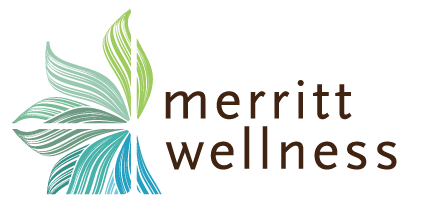Award-winning article!
Published online and in print January 2011 in Acupuncture Today and other publications.
What I’ve seen, in my years of adding nutrition to my practice, is that a lot of people “know” certain things about food. “Know” in the sense that we don’t question the thought anymore. Like we “knew” that low-fat diets were healthy, right? Or that we “know” eggs raise your cholesterol. So let’s look at a big myth that, when you actually learn all the facts, makes you wonder how we got so bamboozled.
Let’s start with the myth that soy is a health food. Years ago, China and Japan planted soy beans, NOT as food for people, but for the sole reason of returning nitrogen to the soil, as growing rice was especially nitrogen-depleting. They knew better than to eat soy, as it was particularly difficult to digest, causing gas and bloating, although at some point, someone figured out that if you buried it for 6 months and fermented it, it didn’t cause those symptoms. And so miso, tempeh, soy sauce, and natto were created.
Soy made its way to the United States in the 1900’s, where Dr. John Harvey Kellogg, the breakfast cereal king, championed the health benefits of the legume and railed against the evils of meat. Henry Ford spent $1.2 million in an effort to make soy plastics and a soy car, and Adolf Hitler and Benito Mussolini were busy promoting soybeans in traditional foods (flours, polenta, etc.). Soy products in the West are treated very differently than they are in the East — soy is a product of the industrial revolution and is an opportunity for science to develop cheap meat substitutes, to put soy in familiar food products, and to produce soy-based pharmaceuticals. Soy wasn’t even seriously considered for food until World War II shortages created a demand for cheap protein. It has been touted as healthy for decades, and the vegetarian population has embraced this, without really knowing the implications of ingesting soy.
There are a couple of reasonably well-known facts about soy that bear repeating here. One is soy is the second-most genetically modified crop in the United States, with corn being the first. Secondly, it’s very difficult to digest for most people — and why is that?
Soy is the only legume that, despite soaking, sprouting and slow cooking, will NEVER neutralize its “anti-nutrients”. These anti-nutrients include phytates, protease inhibitors, lectins and saponins and are all developed for protection of the seed and plant, but those protections cause a huge number of problems for digestion. What do those anti-nutrients do to you?
- Phytates — these block seeds from sprouting too early. The high levels in soy bind tightly to calcium, magnesium, copper, iron, and zinc, leading to everything from osteoporosis, anemia, and immune deficiency, among other things.
- Protease inhibitors — prevent seeds from being digested, and interfere with pancreatic enzymes, especially trypsin and chymotrypsin. Heat will denature some, but not all, in soy. Protease inhibitors can cause cell proliferation in the pancreas as it becomes overworked to produce the digestive enzymes that are being inhibited[i].
- Saponins — cause the soap-like suds when seeds are in water. They contribute to damaging of the intestinal mucosa, along with lectins, causing “leaky gut”, interfere with digestive enzymes trypsin, chymotrypsin and succinate dehydrogenase, and may also be goitrogenic. They stick like glue to the soy protein and no food processing method will work to remove them.
- Oxalates — bind tightly with minerals, especially calcium. While spinach and rhubarb are highest in oxalates, most people will not eat them excessively. High amounts over the recommendation of 10 mg (textured soy protein has the highest at 638 mg per serving) cause kidney stones. Also can be poisonous — for example, the oxalates in sheep’s sorrel will kill you if you eat too much of that plant.
So why is this a big deal? Not enough zinc affects growth, immunity, intelligence, wound healing and 300 other enzymes. Iron deficiency leads to anemia and reduced thyroid function. Claims that plant-based diets provide enough calcium is severely undercut if those diets also include soy, leading to osteoporosis. Yes, adding calcium and zinc to soy milk is ridiculous, and yet the manufacturers say nothing. Eat a little bit here and there, and soy doesn’t pose much of a problem, but more than that, and digestive lining damage occurs, as well as a myriad of other problems.
And what about all that gas? The oligosaccharides raffinose and stachyose are the ones responsible for the flatulence that results when most people eat soy, and again, preparation with soaking, sprouting or cooking does not neutralize them. Beano is a product that contains the enzyme required to break down raffinose and will work for some people, but not for others. Either way, that doesn’t change soy’s interference with mineral absorption.
That difficulty in digestion would be avoided if soy were fermented. The problem is, most people are not ingesting fermented soy — they’re taking it in as soy milk, or tofu, or textured vegetable protein (TVP) or as an additive to other foods. And that’s just talking about the digestive problems with soy — there are other significant problems as well.
And for babies, the effect of soy is especially damaging — it has been linked to pediatric and autoimmune thyroid problems[ii],[iii] (more on adult effects in a moment), aluminum toxicity[iv], and early puberty.[v] As I said earlier, as a trypsin inhibitor, it affects protein digestion and pancreatic function. Soy increases the requirements for vitamin D, reduces the bioavailability of zinc, iron and the other minerals as mentioned earlier, and lacks cholesterol, which is vital for brain development (breast milk has six times the daily amount of adult requirements). And yet, soy is used in a huge percentage of baby formula — why? Well, where are you going to put a “health” food that is our second largest crop?
Adults also get detrimental physiological effects of soy. The thyroid is very negatively affected by soy — this has been known for over 60 years[vi]. Hypothyroidism and goiters are directly associated with intake of soy, and its isoflavones.[vii]While hypothyroidism can be caused by deficient iodine intake, as well as from adrenal stress, if a patient is ingesting soy, it must definitely be removed from the diet before any improvement can occur.
You may have patients who have had breast cancer and their oncologists have recommended against ingesting soy. Or their health food store “expert” said it was helpful for hot flashes. That’s because soy is a phytoestrogen (it’s particular type is isoflavones) — it gives SOME estrogen response in the body. It’s argued that it binds to the estrogen receptor sites, preventing stronger estradiol from causing damage, and it’s also argued that phytoestrogens are estrogen modulators, but either way, there’s an estrogenic effect that needs to be taken into account.
How about accelerated brain aging? It’s being hypothesized that the isoflavones are contributing to diminished cognitive ability, doubling the chances of being clinically diagnosed with Alzheimer’s disease, and has shown brain atrophy and lower brain weights[viii],[ix]. This particular study is considered by fellow researchers not on the soy industry payroll “one of the more robust, well-designed prospective epidemiological studies generally available”.
All of this seems crazy, in the face of the happy families drinking soy milk on television, doesn’t it? If you were to believe the marketing, you’d think you can’t get enough of “healthy soy”. I’ll say this again, and again — don’t fall for marketing.
Regarding soy lecithin — lecithin is a vital nutrient that protects cells, reverses liver damage, improves brain function and memory AND the best source for that is egg yolks. While soy lecithin is a waste product coming from soy oil production, it’s not usually a problem, even for people allergic or sensitive to soy. It’s probably more important to avoid soy protein and soy oil than the occasional product with soy lecithin.
Take a look at the ingredient list next time you’re at a grocery store. Soy is mixed into other oils (good luck finding a salad dressing, even in health food stores, that doesn’t use soy oil), soy protein isolate and textured vegetable protein are used in imitation foods, commercial baked goods, diet beverages, meal replacements and fast food products. Check your bread the next time you buy some from the store — and don’t be surprised to find soy in it. Soy is used extensively in school lunch programs, senior citizen centers, and any other program that uses processed, industrial-developed food. Please protect your health and the health of your family — educate yourself fully on what you eat and what you consider nutrition, even if you think you really “know” it’s good for you.
For more information about the damaging effects of soy, read “The Whole Soy Story” by Dr. Kaayla Daniel, PhD, CCN.
[i] Qual Plant foods Hum Nutr, 1985, 35, 323-329
[ii] Pediatrics 1995 Jul;96(1 Pt 1):148-50
[iii] J Am Coll Nutr 1990;9:164-167
[iv] J Pediatr Gastroenterol Nutr 1994;19(4):377-81 (1994)
[v] Am J Dis Child 1986 Dec;140(12):1263-1267
[vi] J Nutr 1941, 22, 43-52
[vii] Van Wyck JJ and other. The Effects Of A Soybean Product On Thyroid Function In Humans. Pediatrics, 24, 752-6
[viii] Neurobiol Aging, 1996, 7, supple 4, S121
[ix] JAMA, 1996, 276, 955-960


